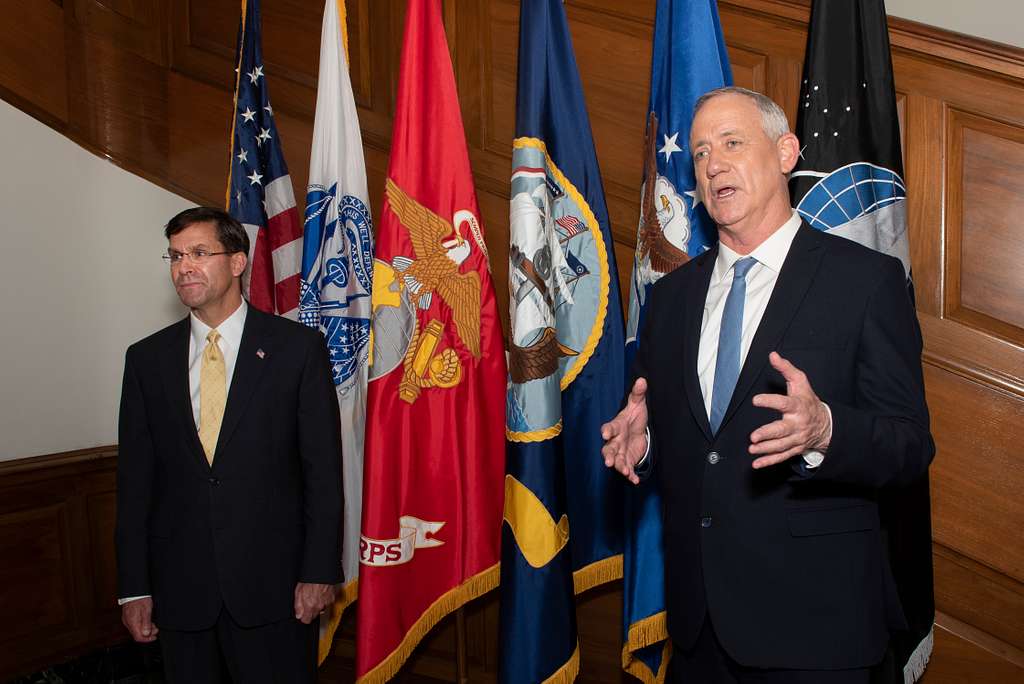When Clay T. (Tom) Whitehead arrived at the Old Executive Office Building on August 7, 1974, dressed as a cowboy, he surely didn’t want to run into Henry Kissinger. Whitehead was supposed to be on vacation in the Rockies, but a last-minute emergency meant he had to stay in D.C. “Well, you know, I got tied up for a little while,” he explained to President Richard Nixon’s powerful National Security Advisor. Kissinger, ever paranoid about being out of the loop, protested: “What is going on here? Something is going on here.”
What was going on had started three months earlier at Whitehead’s Georgetown home, and Whitehead had been keeping the secret ever since. It was a big secret, maybe Washington’s biggest secret that never leaked. Whitehead and three friends were planning for Gerald Ford’s ascension to the presidency, but nobody, not even the Vice President himself, knew what they were up to.
Fifty years ago, the country watched the dramatic final days of Richard Nixon’s presidency. The president, angry and possibly on the verge of suicide, had barely been holding on after the release of audio recordings that confirmed his integral role in Watergate—the bungled plot to break into the Democratic National Headquarters during the 1972 presidential campaign and plant listening devices. His fate seemed sealed, but nobody in the White House, including the vice president, was willing to publicly accept the inevitable end to his time in office. Even Nixon wavered on whether he’d resign.
On the very same day Whitehead was busy in his denim and cowboy boots, Vice President Ford said to a reporter: “I have told nobody on my staff, from [Chief of Staff] Bob Hartmann on down, to make any contingency plans.” Ford, not known across the capital for his guile, wasn’t lying. He hadn’t told his staff to plan, though he had to have realized his best friend Phil Buchen would still know what to do.
Buchen wasn’t, in fact, on the Vice President’s staff, but he was Ford’s trusted eyes and ears in Washington. Earlier that year, the vice president had got his former Michigan law partner a desk in the Office of Telecommunications Policy (OTP), just down the hall from Whitehead, who was the office’s director. The two had begun to talk, and a friendship formed.
Whitehead, with his Ph.D. from the Massachusetts Institute of Technology, was no Nixon opponent; he’d been there since before Day 1, helping the President’s transition in 1969. That’s why when Buchen arrived for dinner at his new friend’s rental at 28th and N Streets on May 7, Whitehead and his wife Margaret didn’t know what would happen next. Though it now seems Whitehead may have broached the topic with Buchen earlier, reporting at the time suggested that the Whiteheads were shocked when Buchen pleaded: “We have to do some planning for Jerry. We have to face the fact that the president may resign.”
Reluctantly, Whitehead agreed with Buchen and soon organized a team of three, all in their 30s, to develop a transition plan. Whitehead didn’t want a group of Washington lawyers and big businessmen; he needed those who knew policy and how the White House really worked. Brian Lamb, who went on to found C-SPAN several years later, joined the team. He’d been Whitehead’s OTP assistant and couldn’t say no to his former boss.
The other two were more curious choices. Jonathan Moore, then running the Institute of Politics at Harvard, and Laurence (Larry) Lynn, a Brookings economist, had each just left the government, casualties of the bumpy ride that was the Nixon administration. Nixon and Kissinger had grown to distrust each man. Moore was the type of soft-headed dove that Nixon deplored and Lynn, a Democrat, was suspected of being the leaker of the Pentagon Papers or maybe even Deep Throat.
Once everyone signed on, Buchen called the group the Whitehead Project. To Whitehead, it was the Buchen Project. Margaret Whitehead cheekily dubbed them the Ford Foundation. Whatever the name, the work had to be kept secret. “We just thought it was dangerous to let this get out,” Lamb recently told me. While Nixon might be in trouble, he’d talked little of resigning at that point in the spring and an impeachment remained a long way off. If he survived, they’d be traitors, drawn and quartered by Nixon’s henchmen.
That summer, Whitehead, Lamb, Lynn, and Moore discreetly convened, without Buchen, each Tuesday at a round table in the Whiteheads’ basement dining room. According to Lamb, Whitehead said: “Let’s do the best we can. To send the best structure on paper to Jerry Ford that will make his first month, his first year, doable.”
What started as an academic exercise, a master class on the presidency, soon grew more specific. Who should be on the official transition team? Who should be the new press secretary? What should the new President’s agenda be after he was sworn in—the period they audaciously called “Genesis”?
Whitehead believed they had until at least September to finish up their plans, according to reporting by Bob Woodward and Carl Bernstein, so each agreed to write a paper on their areas of expertise. These would be bound together and shared with Vice President Ford if Nixon resigned.
The timing mattered. Lamb revealed to me that Whitehead advised Buchen on what to do when Nixon made the long-awaited announcement that he was resigning: “Get into the limousine and ride to Alexandria to Jerry Ford’s house and hand this to him. If you ask anyone else to do that, it’ll never get done.”
This is because Whitehead was in on another secret: their “Ford Foundation” wasn’t the only secret transition planning. Three other groups were busy, according to Lamb, at least one drawn from a different group of Ford-partisans from Michigan. Garry Wills opined in the New York Review of Books that Benton Becker, who later negotiated Nixon’s pardon, was also secretly planning that summer, and once Kissinger saw Whitehead’s boots, he dispatched foreign policy aides Brent Scowcroft and Laurence Eagleburger to start drafting transition plans for international affairs.
If Buchen didn’t act quickly, his good-natured friend Gerry would be swallowed whole. A clean break from Nixon and his coterie of White House advisors was needed. It was what Ford needed. It was what the country needed.
At the start of August, days before Nixon finally resigned from office, Lamb received a call. When much of Washington had gone to bed, Whitehead telephoned Lamb from his sister’s house in Northern Virginia to tell him the vice president knew what they’d been up to. Whitehead had been planning a family camping trip in Colorado and his wife had gone ahead earlier with all his clothing. That’s why Whitehead was left only with the Western attire when Buchen notified him that Nixon’s was nearly out. Ford now knew what they’d been up to. Final plans had to be concluded right away.
The group of four, first, had to grow—they were simply too green on their own. As Buchen drank a martini on the rocks at the vice president’s home on Crown View Drive in Alexandria, Virginia, (at the time there was no vice presidential residence) Ford counseled him to contact six heavy hitters, including former Pennsylvania Governor William Scranton, Michigan Senator Robert Griffin, former Wisconsin Congressman John Byrnes, Secretary of the Interior Rogers Morton, Nixon and Eisenhower alumnus Bryce Harlow, and the vice president of U.S. Steel, William Whyte. Betty Ford opened her address book and gave Buchen their phone numbers.
The next day, August 7, the new group met at Whyte’s home, sustained on steak and roast beef sandwiches. This was no longer a group of young Turks imagining a transition; it was the real thing, and they had just 24 hours until Nixon made his resignation official. After midnight, the group adjourned, having assembled a shell of a plan for Ford. As they were leaving, Buchen remarked to Whyte’s wife on the significance of what they’d just done: “You might lose your dining-room table to the Smithsonian someday,” according to Woodward and Bernstein.
“Come to the Executive Office Building—Rm. 263—quick like a bunny,” was the message Donald Rumsfeld received from Whitehead and Scranton when he deplaned at Dulles airport. Rumsfeld, Ambassador to NATO at the time was en route to the small town of Grimaud in the south of France for a short vacation when he got the call that he was needed back in Washington. Rumsfeld was to be the leader of the Ford transition team.
After watching Nixon’s resignation speech at a party alongside Brigitte Bardot’s manager, Rumsfeld flew from Nice to London and then back home on August 9, greeted by Dick Cheney, Rumsfeld’s former assistant, at the airport in Virginia, just an hour after Ford had been sworn in.
Though Buchen had followed Whitehead’s advice, rode in Ford’s limousine, and placed the inch-thick loose-leaf notebook in the Vice President’s hands, Whitehead was right to fear that others would elbow them aside. Even Rumsfeld, who they’d identified as their leader, showed scant interest in the product of their three months of planning, according to Lamb.
They’d cautioned that Nixon’s chief of staff should be avoided, but there Al Haig remained, still in the White House, still the chief of staff. Buchen, Becker, and Rumsfeld all joined the White House, but the others were gone: Whitehead off for a stint at Harvard with Moore; Lynn for a long academic career; and Lamb never to step foot in the government again. The four never even reconvened to talk about what they’d done.
According to his biographer, Lamb called the group’s work “the only kept secret in Washington.” That’s probably an exaggeration, but at the time, it was as good as true. Secrets are a little harder to keep today, especially when groups conspire for the chance to influence a new administration, yet their plans are not widely known by the public. Right now, a conservative operation spearheaded by the Heritage Foundation called Project 2025 is constructing an aggressive strategy to help Donald Trump blitzkrieg Washington if he makes it back to the Oval Office. The ambitious effort has received sporadic media coverage, but Trump doesn’t talk about it on the stump, and most voters have scant awareness of it.
It’s not always clear who benefits from this secrecy. The public certainly doesn’t, not when the deals are made long before votes are cast. In 1974, that hardly mattered since nobody had voted for Ford. His path to the vice presidency was not conventional, and his elevation to the Oval Office was even more unusual. Perhaps, then, that discrete planning made sense. Maybe it was even necessary. Nonetheless, as we bump through another campaign with the future of the country in the breach, a little more openness, a little more of Gerry Ford’s candor, and a little less of the secrecy that was his transition planning would probably do us all some good.
Today, Brian Lamb is the only one left. “It was a terrible time; I was very naive about what to expect in Washington,” he said recently. “The only plus side of it: it put me on guard for the rest of my life about politicians.”

















